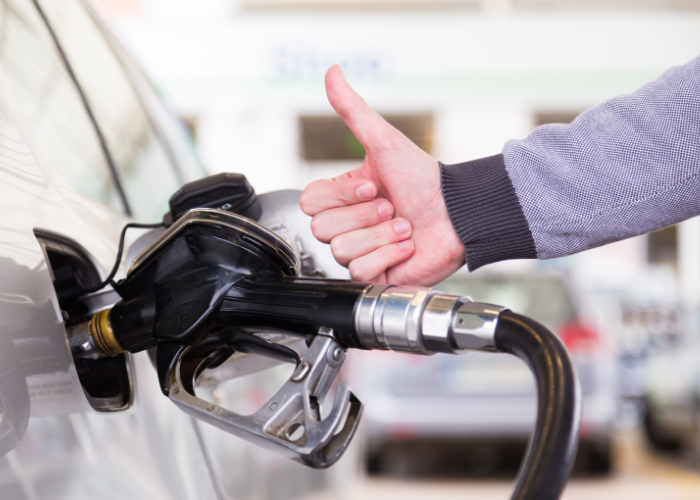MADRID – Now that the government of Spain has announced it will end the general subsidy of 20 cents on every litre of fuel as of January 1, a price war is threatening to break out between the largest petrol stations. However, could mean better fuel prices for consumers.
As of January 1, the discount of 20 cents per litre only applies to professionals and transporters. However, vulnerable families will receive a ‘petrol check’ of €100 as support. Therefore, gas stations are now taking measures to retain customers. The most important brands in Spain started a strategy to gain market share with the entry into force of this government support on April 1st. This is except for Repsol, which preceded the government on March 16 with an additional discount on the announced government discount.
Trade war
Related: Prime Minister Sanchez allocates 10 billion euros for expansion of anti-crisis support
Since then, according to Merca2.es, the gas stations have been embroiled in a trade war that will last at least until March of next year and that has also put pressure on the companies’ margins. Repsol has now extended its discount of 10 cents per litre. Consequently, this puts the company ahead of the rest of the oil companies. Galp has also changed its strategy and will apply a discount of the same amount from January 1. However, new Galp customers will receive an additional bonus of €0.25 for single use, as long as they meet the loyalty requirements.
Both BP and Cepsa have not yet announced whether they will maintain their price cuts. Sources from BP assure that this measure is being studied. Cepsa is still waiting to see whether it will eventually take on the additional cost of this discount.
According to Repsol’s calculations, the oil company has been able to save its customers almost €440 million. With these bonuses, Cepsa has lightened its customers’ wallets by about €130 million.
Oil companies and consumers want to keep the regulation
Major oil companies and consumers have urged the government to keep the subsidy to fight inflation. However, the price of gasoline is now at a level very similar to that of a year ago, without taking into account the bonus. Including the bonus, the drop is 12.5% compared to December 2021 price, according to data from the National Commission for Markets and Competition (CNMC) and the EU Oil Bulletin, which tracks the average price of gasoline in each country.
Related: Ten million Spaniards receive a petrol cheque for €100
Repsol and Galp only apply the discount to customers using the companies’ official applications, Waylet in the case of Repsol and Mundo Galp. Although Galp does this for €0.10 and 25 cents extra for new users. Spain’s largest oil company will keep the bonus until March 31. Meanwhile Galp will leave the end date open until current market conditions ease. Galp also applied a 5 cent discount to customers not using Waylet.
BP and Cepsa are not yet involved in a trade war
Cepsa joined the extra discount in April, while BP implemented a 12 cent discount for individuals and another 14 cents for professionals. Neither company has yet announced anything about its sequel in the new year.
Discount ends when many people are on the road
The end of the discount comes in the middle of the weekend when many Spaniards are on their way home after their Christmas holidays. Holding on to discounts, Spain’s largest oil companies are trying to retain customers at a time when inflation is hitting consumers by land, sea and air. Gas stations expect large crowds on the last day of the year because they expect everyone to quickly fill up their tank before the discount has ended.
By continuing to give their discounts, Repsol and Galp are putting pressure on Cepsa and BP to participate in this trade war. It will produce winners and losers, especially in the so-called cheap/unbranded petrol stations. They cannot compete by further reducing their already very low margins.
In this way, Repsol and Galp also put pressure on Petroprix, Nuroil and Plenoil, among others. These three companies have not yet decided whether they will drop another 10 cents of their margins to maintain the gap with the major gas stations.
The pressure of Repsol on the low-cost filling stations
These smaller companies have hardly any room for manoeuvre. The secret lies in keeping prices low, first of all, because of lower investments in R&D and the lack of additional services and sometimes also personnel. The composition of the fuel is practically the same. Many consumers are concerned about ever-increasing costs.
The indictment of low-cost gas stations against the major
The cheap gas stations have sued the big over an alleged pact by offering these discounts on the market. The competition watchdog CNMC is now investigating the matter. According to the complainants, the reductions of €0.10 were “aggressive”. However, they admitted that it was impossible to compete with the companies with the largest number of stations in Spain.
No estimate of the price of gasoline in Spain in 2023
Despite the government subsidy, the price of fuel continued to spike to an all-time high in the summer, in the wake of the rise in oil prices. However, Diesel has shot record highs as a result of the Russian invasion of Ukraine. Due to the existing uncertainty, none of the major companies has published their forecasts for the price of petrol and diesel for 2023. “We don’t have a crystal ball,” the sources consulted insist.
Everything depends on key factors
Everything will depend on several key factors, such as the prolongation of the Russian invasion of Ukraine, the price of oil, the demand for this commodity and whether or not the expected recession continues, as well as its depth. At the moment, the Spanish industry has drastically reduced electricity consumption, a sign that the warehouses are full or that a drop in sales is expected.


